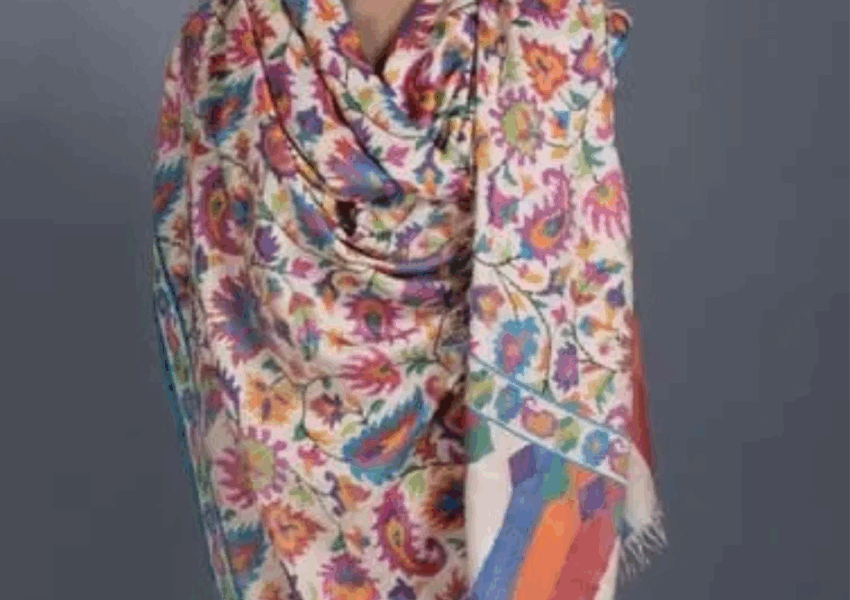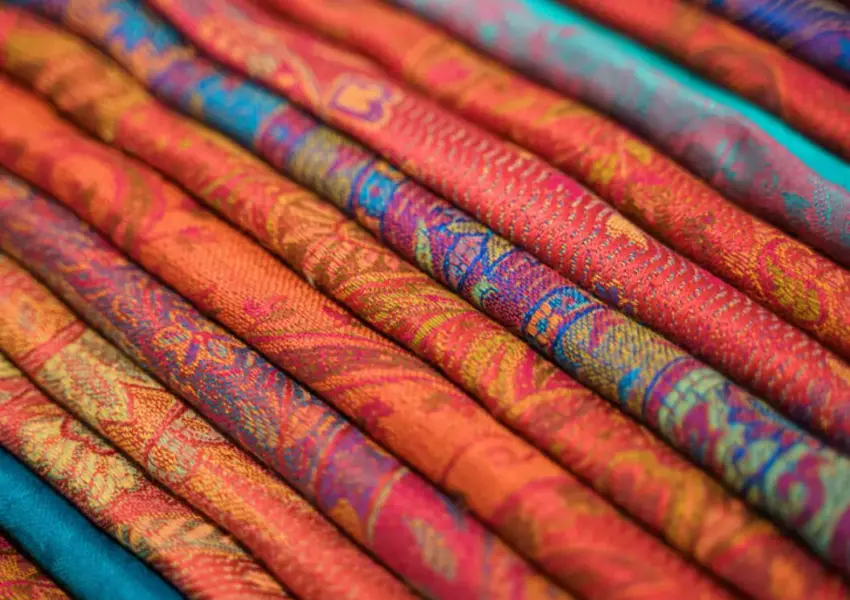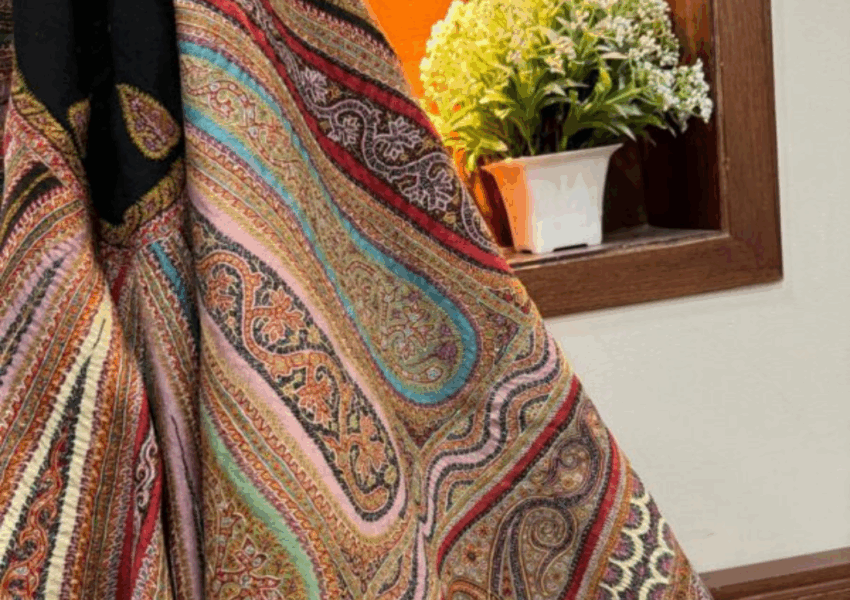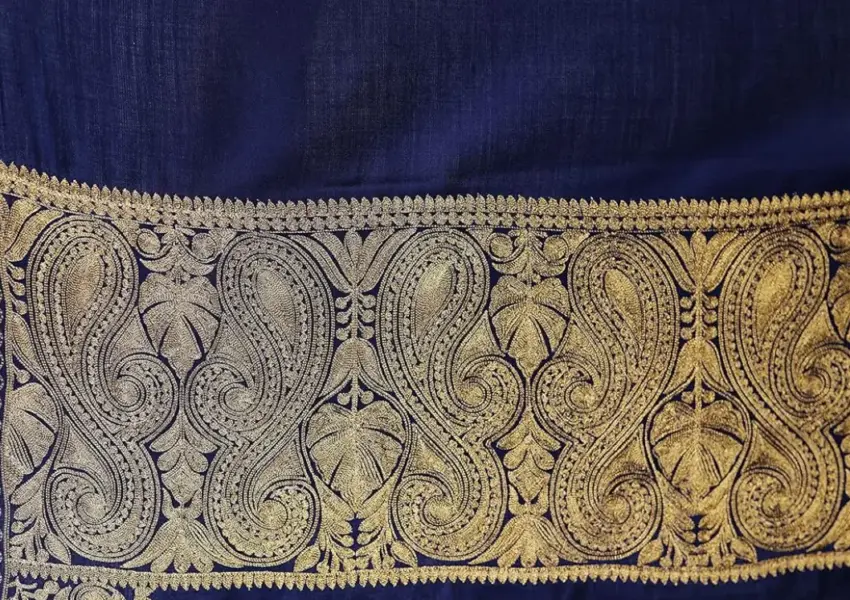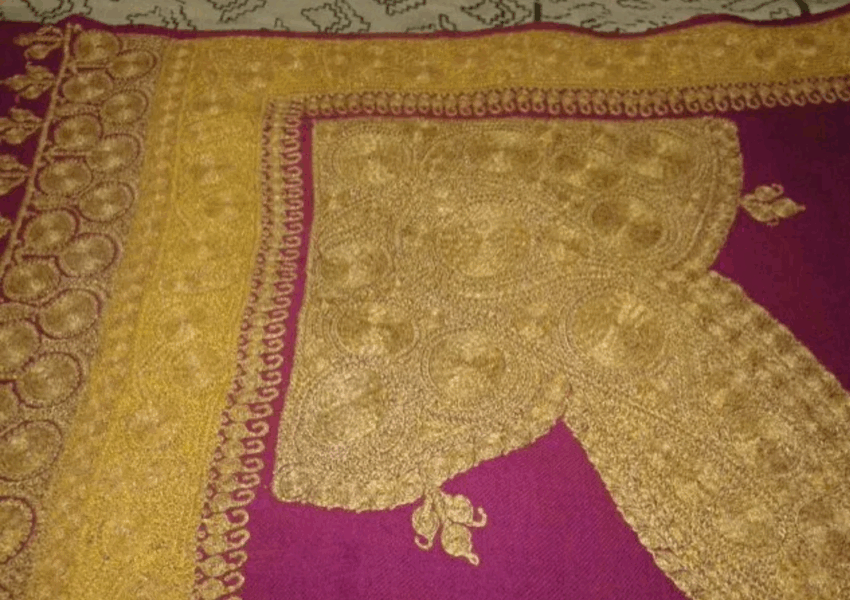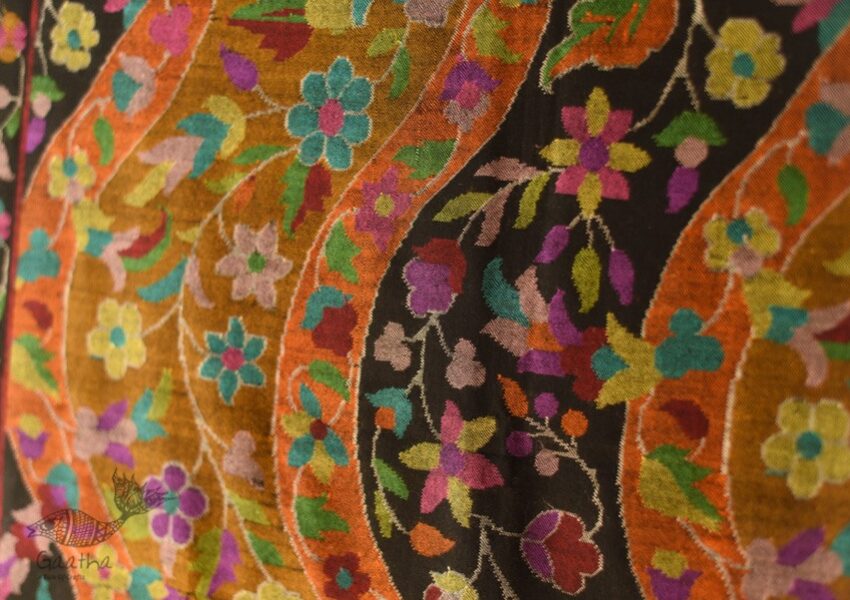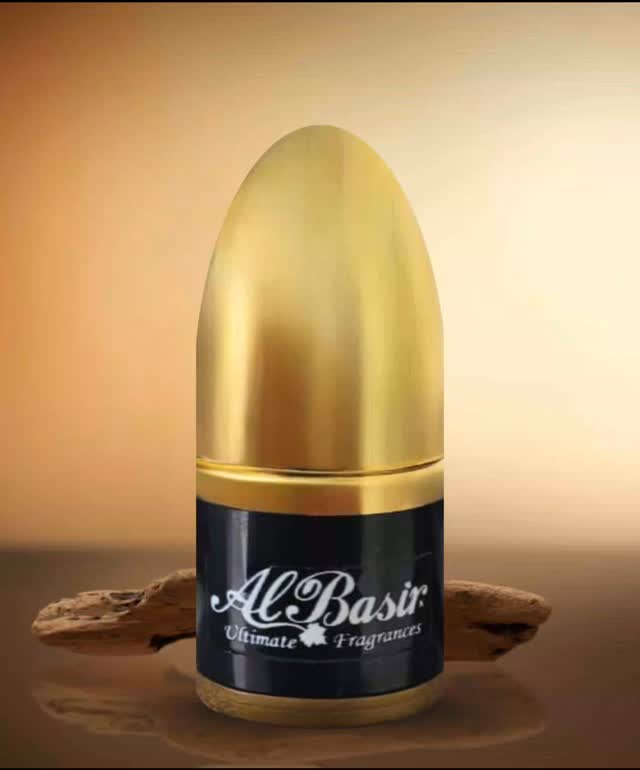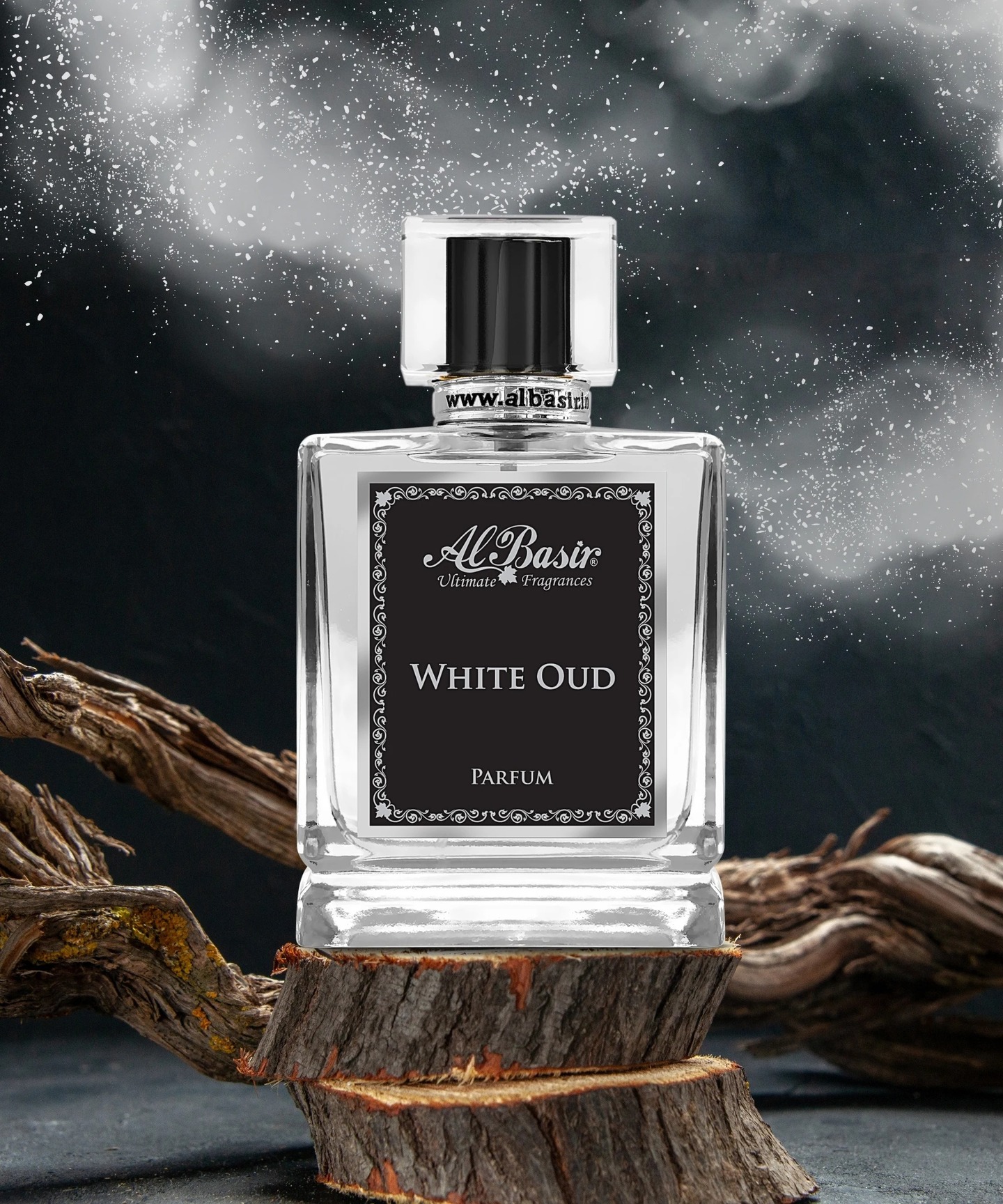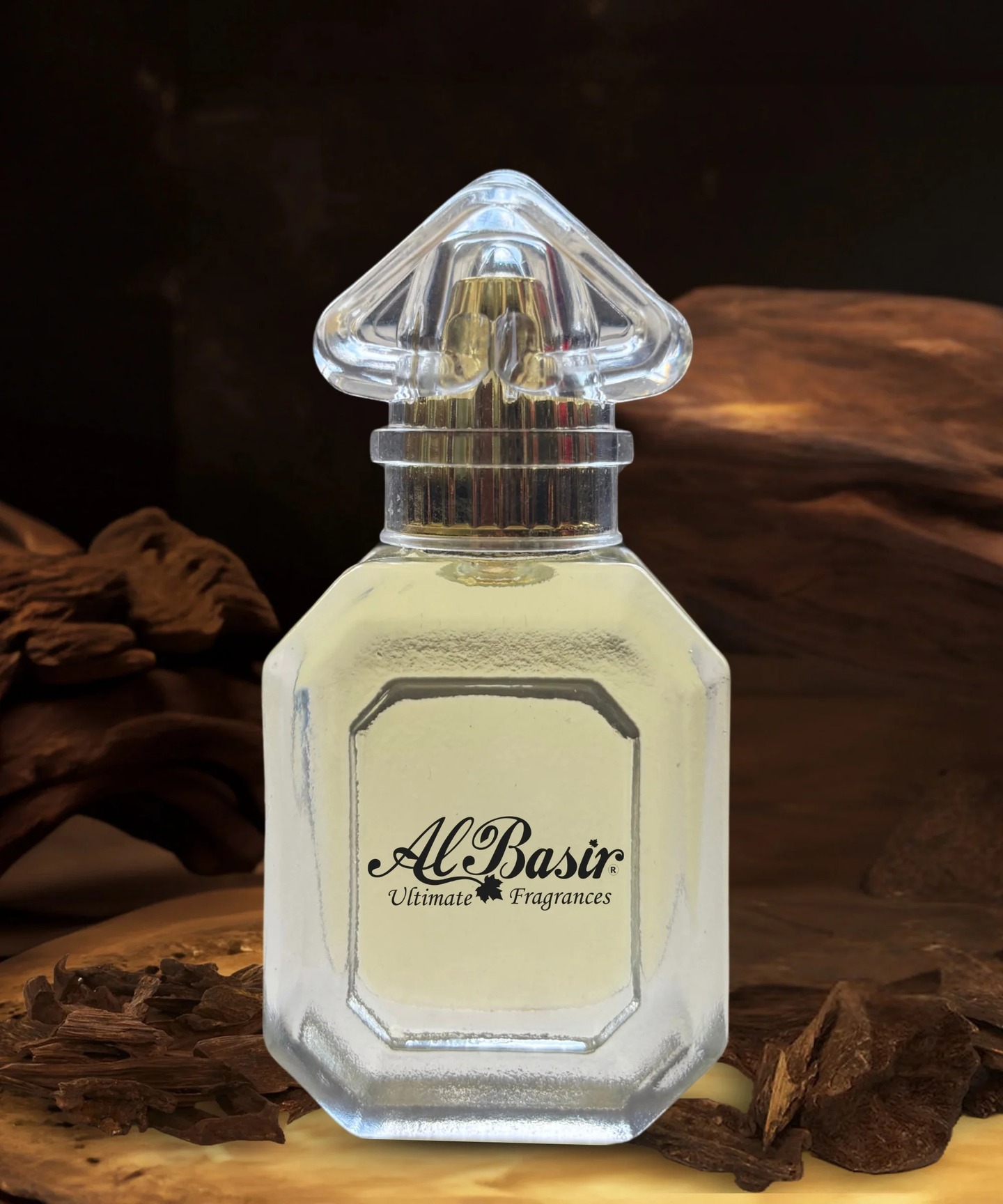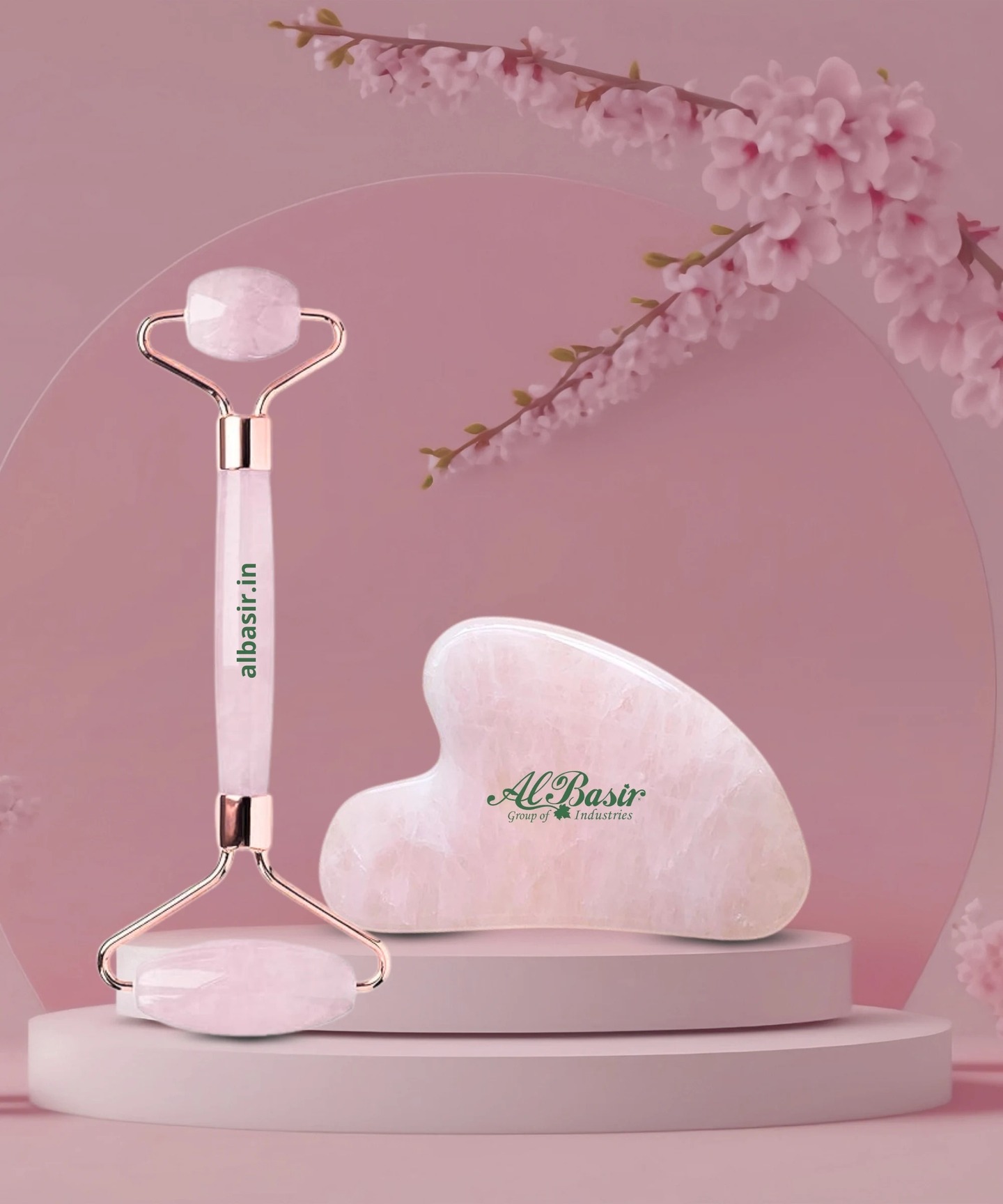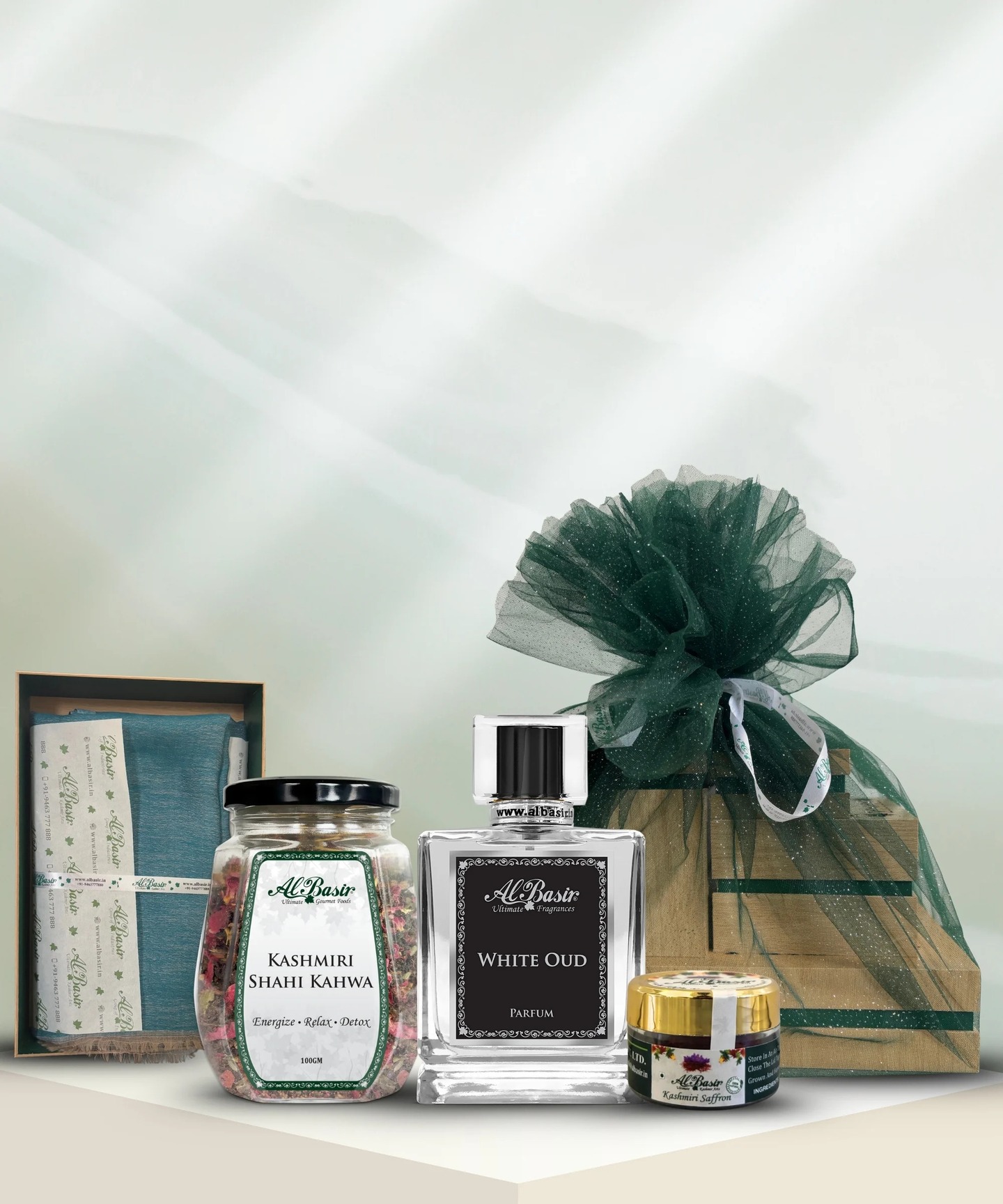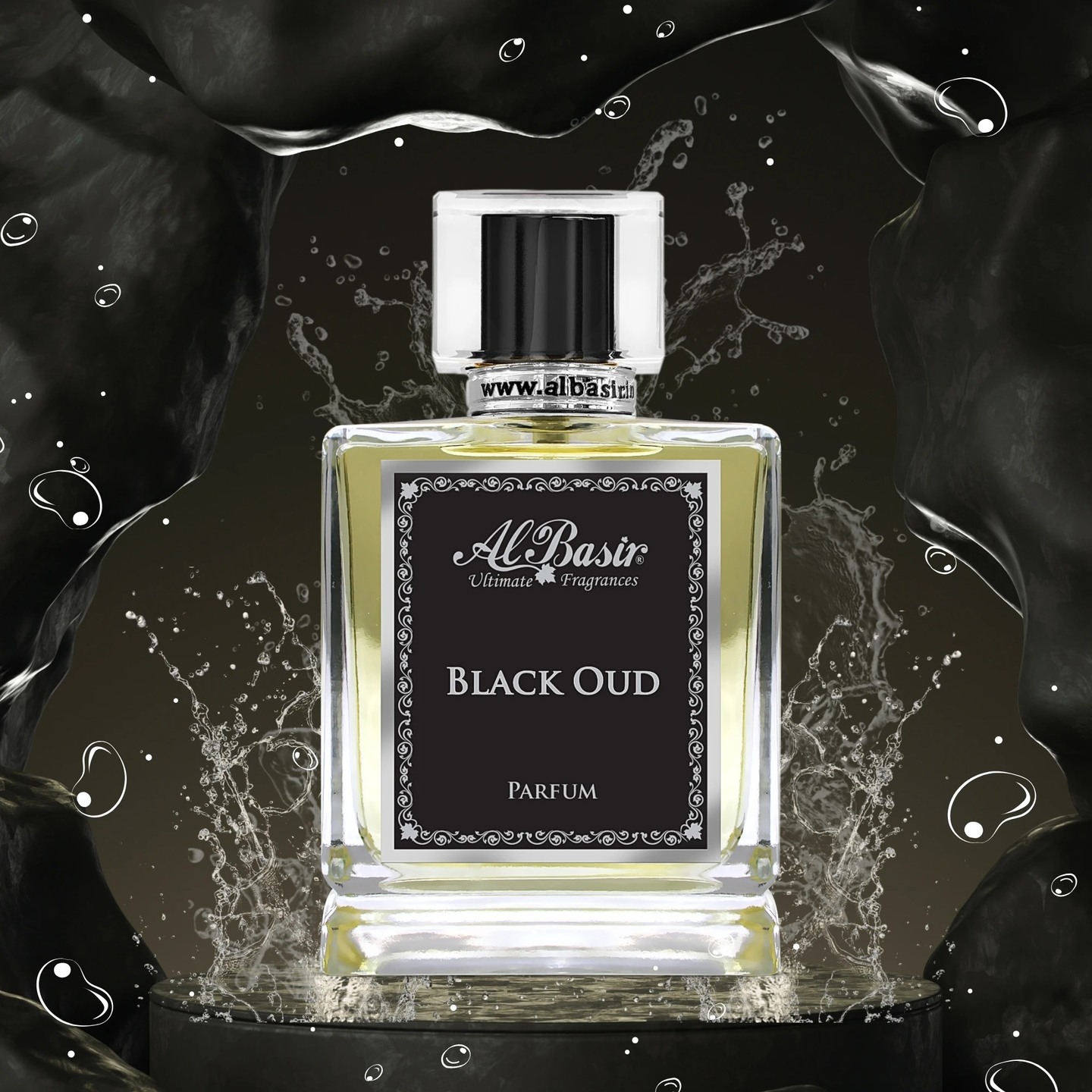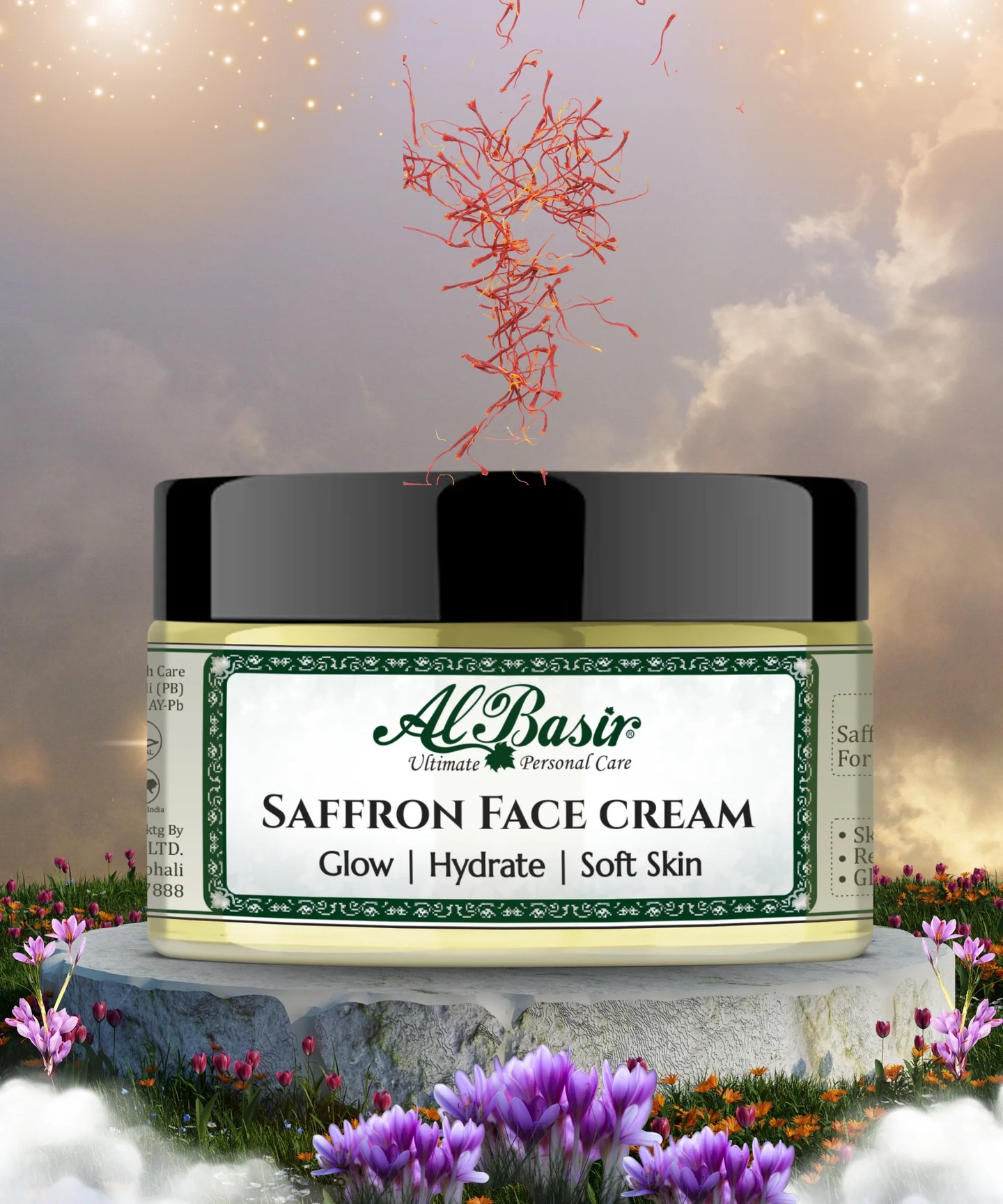Antique Aari Masterpiece: Hooked Heritage, Sewn Legacy
Wrapped in warmth and culture, an antique Aari work shawl isn’t just a fashion statement—it’s a tapestry of elegance, heritage, and timeless craftsmanship. Let’s unfold its allure, the artisans behind it, and why these shawls are treasured across generations.
What Is an Antique Aari Work Shawl?
An antique Aari shawl is a masterpiece of Kashmiri heritage, woven with a rich tapestry of history and artistry. Crafted using the distinctive Aari needle—a slender, hooked instrument—artisans create continuous, elegant chain stitches that form intricate patterns on the fabric. This technique, known as chain stitch embroidery, allows for the creation of detailed motifs that are both textured and visually captivating.The designs often draw inspiration from nature, featuring floral blooms, paisley swirls, and chinar leaves, each symbolizing elements of Kashmiri culture and the region’s rich tapestry of flora. These motifs are not merely decorative; they carry deep cultural significance, reflecting the valley’s natural beauty and spiritual heritage.
How Is an Antique Aari Shawl Made ?
- Fabric Preparation and Design Transfer
The journey begins with selecting a high-quality fabric, often pure pashmina, fine wool, or silk, known for their softness and warmth. Artisans then transfer traditional designs onto the fabric using finely carved walnut woodblocks, ensuring that the motifs are aligned and ready for embroidery.
- Stretching the Fabric on a Frame 🪢
The prepared fabric is tightly stretched over a wooden frame, known as an “adda”, to maintain tension and prevent any movement during the embroidery process. This setup allows artisans to work with precision and consistency.
- Embroidery with the Aari Needle 🪡
Using a hooked needle called the Aari, artisans execute the embroidery by pulling a chain of loops, each rising from the previous in continuous succession. This technique, known as chain stitch embroidery, is executed from beneath the fabric, allowing for the creation of detailed and textured patterns. The Aari needle enables artisans to work more efficiently, producing intricate designs that are both bold and elegant.
- Adding Embellishments
To enhance the visual appeal, artisans often incorporate additional elements such as zari threads (gold or silver-colored threads), beads, sequins, and stones into the embroidery. These embellishments add depth and a touch of luxury to the shawl, making each piece unique.
- Finishing Touches
Once the embroidery is complete, the shawl undergoes several finishing processes. This includes washing in spring water to remove any residual dyes and to soften the fabric. The edges are then carefully fringed, adding a final touch of elegance.
Each antique Aari shawl is not just a piece of clothing; it’s a wearable work of art that carries the legacy of Kashmiri craftsmanship. The intricate designs and meticulous embroidery reflect the rich cultural heritage of the region, making these shawls cherished heirlooms passed down through generations.
Why Are An Antique Aari Shawls So Expensive?
- Intricate Handcrafted Embroidery
Each antique Aari shawl is a masterpiece of hand-embroidery, where skilled artisans use a hooked needle to create continuous chain stitches. This meticulous process results in detailed motifs like paisleys, floral patterns, and chinar leaves, often achieved through the Dorukha technique, where designs are identical on both sides. The time and expertise required make these shawls highly valuable.
- Premium Materials
Crafted from luxurious fabrics such as pure pashmina, fine wool, or silk, these shawls offer exceptional softness and warmth. The use of high-quality materials not only enhances comfort but also contributes to the shawl’s durability and aesthetic appeal.
- Rich Cultural Heritage
Originating from Kashmir, these shawls carry centuries of cultural significance. They reflect the region’s rich history and artistic traditions, making them more than just garments—they are wearable pieces of art.
- Time-Intensive Craftsmanship
The process of creating an antique Aari shawl can take anywhere from one month to a year, depending on the complexity of the design. This labor-intensive process adds to the shawl’s exclusivity and value.
- Unique and Timeless Designs
Each shawl features unique designs, often inspired by nature and traditional motifs. The artistry and originality of each piece add to their uniqueness and value, making them cherished heirlooms across generations.
- Rarity and Exclusivity
With fewer artisans practicing this traditional craft, the rarity of authentic Aari shawls increases their desirability and cost. Owning one is a privilege that connects the wearer to a rich cultural legacy.
In essence, the combination of intricate craftsmanship, premium materials, rich cultural heritage, time-intensive creation, unique designs, and rarity contribute to the high value of antique Aari shawls. They are not just accessories but treasures that embody the artistry and traditions of Kashmir.
Types of An Antique Aari Shawls
Antique Aari shawls come in various styles, each showcasing unique embroidery techniques and designs:
- Jamawar (Jamewar) Shawl
Features dense, all-over embroidery with paisley motifs. Often crafted from fine pashmina wool, it is considered the most luxurious Aari style. Some Jamawar shawls took decades to complete, making them highly valued heirlooms.
- Jaaldar Shawl
Embroidered with a loose, floral pattern, allowing the base fabric to remain visible. It offers a balance between ornate decoration and subtlety. The term “Jaaldar” refers to the open, net-like structure of the embroidery.
- Bootidaar Shawl
Features small motifs (bootis) scattered across the fabric, providing a delicate and airy appearance. Suitable for both casual and formal occasions. The bootis are often inspired by nature, adding a touch of elegance to the shawl.
- Palladar Shawl
Embroidery is applied only along the two longer borders, leaving the central area plain. Ideal for understated elegance. The term “Palladar” refers to the broad borders that frame the shawl.
- Dordaar Shawl
Embroidery spans over all four sides, creating a frame-like effect. Adds a unique touch to An Antique Aari shawl. The term “Dordaar” signifies the extensive embroidery covering the entire perimeter.
Difference Between Handmade & Machine‑Made An Antique Aari work Shawls
Handmade Aari Shawls
1.Embroidery Technique
Handmade Aari shawls are meticulously crafted by skilled artisans using a hooked needle (Aari) to create continuous chain stitches. This labor-intensive process results in intricate patterns, often featuring floral, paisley, and chinar motifs, reflecting Mughal and Kashmiri aesthetics. The designs are typically rendered on luxurious materials such as pure pashmina, fine wool, or silk, known for their softness, warmth, and elegant drape.
2.Design Uniqueness
Each handmade Aari shawl is unique, with slight variations in design and stitch, showcasing the individual artisan’s skill and creativity. These subtle differences add to the charm and authenticity of each piece.
3.Cultural Significance
Handmade Aari shawls are deeply rooted in Kashmiri tradition and heritage. The intricate embroidery techniques have been passed down through generations, preserving the rich cultural tapestry of the region.
4.Craftsmanship Time
Creating a single handmade Aari shawl can take months or even years, depending on the intricacy of the design. This slow pace reflects dedication and artistry, with artisans often working collaboratively to bring each piece to life.
5.Cost
Due to the labor-intensive process and the use of high-quality materials, handmade Aari shawls are generally more expensive. The cost reflects the time, skill, and artistry invested in each piece.
Machine-Made Aari Shawls
1.Embroidery Technique
Machine-made Aari shawls are produced using automated embroidery machines that replicate traditional Aari patterns. While this ensures uniformity and consistency, it lacks the personal touch and intricate detailing found in handmade pieces.
2.Design Uniqueness
Machine-made shawls have uniform designs, with identical patterns repeated across the fabric. This uniformity can strip away the uniqueness and character that handmade shawls possess.
3.Cultural Significance
While machine-made shawls may mimic traditional designs, they often lack the deep-rooted cultural significance and heritage associated with handmade Aari shawls.
4.Craftsmanship Time
Machine-made shawls are produced rapidly, significantly cutting down creation time—but at the cost of the rich detailing and emotional investment present in handmade pieces.
5.Cost
Machine-made Aari shawls are more affordable due to the efficiency of mass production. However, they may not offer the same level of quality or uniqueness as their handmade counterparts.
Benefits of an Antique Aari Shawl
Wearing an antique Aari shawl means embracing more than just beauty—it’s about comfort, heritage, and timeless artistry:
Luxurious Softness & Warmth — Made from rich fibres like pashmina, wool, or silk, these shawls wrap you in gentle warmth without weight.
Natural Breathability & Skin-Friendly — Crafted from natural fibers, they regulate temperature and are gentle on the skin—perfect for across seasons.
Calming & Emotional Comfort — There’s something mind-soothing about wrapping yourself in handmade art—like a cozy, cultural hug.
Versatile Elegance — Whether draped over formal wear or paired with casual jeans, they elevate any outfit with grace.
Cultural Legacy — Each shawl carries deep-rooted Kashmiri traditions, turning everyday wear into a wearable heirloom.
Use & Styling Tips
For Formal Flair: Drape over a saree or gown to elevate your ensemble.
Casual Chic: Wrap it around your shoulders with jeans and a tee for a boho-glam look.
Home Décor: Lay it on your couch or hang it as wall art—turn a room into a gallery.
Fusion Vibe: Pair with modern western wear (like blazers or dresses) for a lovely East-meets-West aesthetic.
Care Instructions
Cleaning: Hand wash using cool water and mild detergent.
Drying: Lay flat to dry, away from direct sunlight to preserve colors and texture.
Ironing: Use low heat with a cotton cloth overlay—preferably iron from the reverse side.
Storage: Fold neatly into a muslin cloth, store in a cool, dry place with moth deterrent.
The Journey of an Antique Aari Shawl
Every antique Aari shawl is a timeless storyteller. Crafted in the valleys of Kashmir, these beautiful pieces began their life as the softest pashmina or wool, handwoven with care. Artisans then stretch the fabric over a wooden frame, preparing it for the magic of embroidery. With the signature hook-like Aari needle, these craftsmen weave intricate chain stitches—paisleys, vines, chinar leaves, and floral motifs—emerging loop by loop like blossoming gardens. Rooted in Mughal elegance and centuries of heritage, each shawl may take weeks to months to complete Culture and Heritage
Once finished, these heirloom shawls traverse generations, carrying the soul of their makers. When you drape one today, you’re not just honoring exquisite craftsmanship—you’re wearing a living bridge between the past and the present, stitched with artistry, culture, and timeless grace.
Promise You Can Trust
Genuine Hand-Crafted Products – 100% handmade by skilled artisans using traditional techniques.
Fair Wages for Artisans – We support and empower the hands behind the art.
No Mass Production – Each piece is exclusive and one of a kind.
Carefully Inspected & Lovingly Packed – Quality-checked and packaged with care.
Certified Authentic – Comes with product authenticity certification to ensure you’re getting a true hand-crafted piece.
Warranty Included – Enjoy peace of mind with our product warranty.
Not Imitated or Mass-Copied – Our designs are original and rooted in cultural tradition — never machine-replicated.
Truly Handmade – Every shawl reflects the artisan’s time, effort, and passion — not machine-made shortcuts.
Final Thought
An antique Aari work shawl transcends mere accessory status—it’s a wearable treasure woven with heritage and Care. Each looped chain stitch and delicate floral motif is a testament to centuries of craftsmanship, tracing back to ancient Mughal patronage and embedded in the spirit of Kashmiri artisans. The sumptuous fiber, soft as a whisper, carries not just warmth but the artistry of generations. Historically, such shawls have warmed bodies and souls alike, becoming cherished heirlooms passed lovingly through families as symbols of love, legacy, and cultural continuity. Wrapped in one today, you’re not merely draping fabric—you’re embracing a legacy of elegance, tradition, and time, all stitched into a graceful embrace of style and story.














